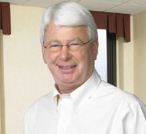Top Firm CEOs Outline Change and Growth Strategies

The ability to recognize and address lifecycle issues such as succession and compensation, as well as seize opportunities like mergers, are critical for helping spearhead current and future growth, according to a trio of major firm CEOs.
“Taking advantage of opportunities is what a managing partner is all about,” said Bob Glaser, CEO of Buffalo, N.Y.-based Freed Maxick Battaglia, which last month repurchased itself back from former parent H&R Block. “I’ve sat down and done more five-year plans that I can remember, but never got past two years. We were acquired by Block in 1998 and bought ourselves back in 2011, and they were the two greatest things that ever happened to us. And we have another one [merger] coming in 2012.”
Glaser said the firm spends on R&D on an ongoing basis and encourages teamwork and cross-selling for the sales and marketing teams. “You owe it to yourself and your firm to determine what that opportunity means.”
At Maine-based Baker Newman Noyes, which was formed in 1995, CEO Charlie Hahn said that even though the firm had been successful it still faced a series of lifecycle issues and eventually had tackle governance and compensation issues, as well as implement a deferred comp program.
“We had high-performing partners questioning why they were being paid the same as those who weren’t,” he said. “So we booked a full-day retreat for the partner group on deferred comp and governance, and discussed how we would change the Big Three. We formed three partner groups based on ages and organized a management committee of seven people. Each had one partner sit on the lifecycle committee to determine how we would change them.”
In just over one year, the firm eventually moved from an equal compensation system to and open comp system to “build trust.”
For Steve Mayer of San Francisco-based BPM, which dates back to 1986, the growth strategy was ushered in with a “Ring the Bay” strategy in 2004, consisting of the firm looking for $4 million to $5 million practices scattered around the San Francisco area. The firm also made a dozen “lateral hires” of experienced professionals from other firms.
“We were at about $16 million, and we wondered what we would look like if we were a $25 million firm,” said Mayer. “We also had to convince our partners to make those hires that may total over $1 million. You need buy-in from the partners. We also put in partner-level people in HR, IT and marketing.”
Last year, the firm announced a merger with Windes & McClaughry in Southern California to create a firm with revenues approaching $100 million.
Start free ReadyRatios
financial analysis now!
start online
No registration required!
But once registered, additional features are available.